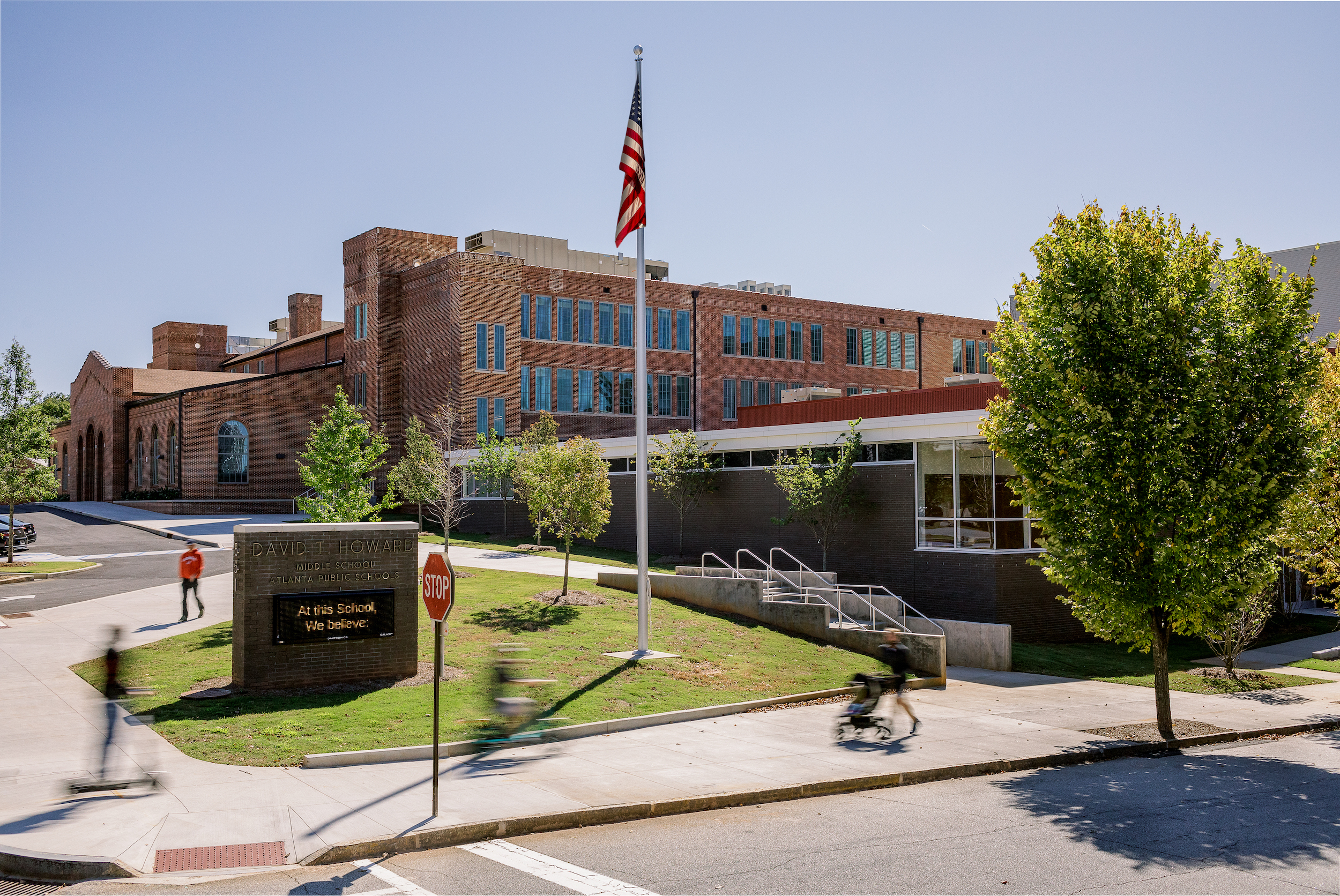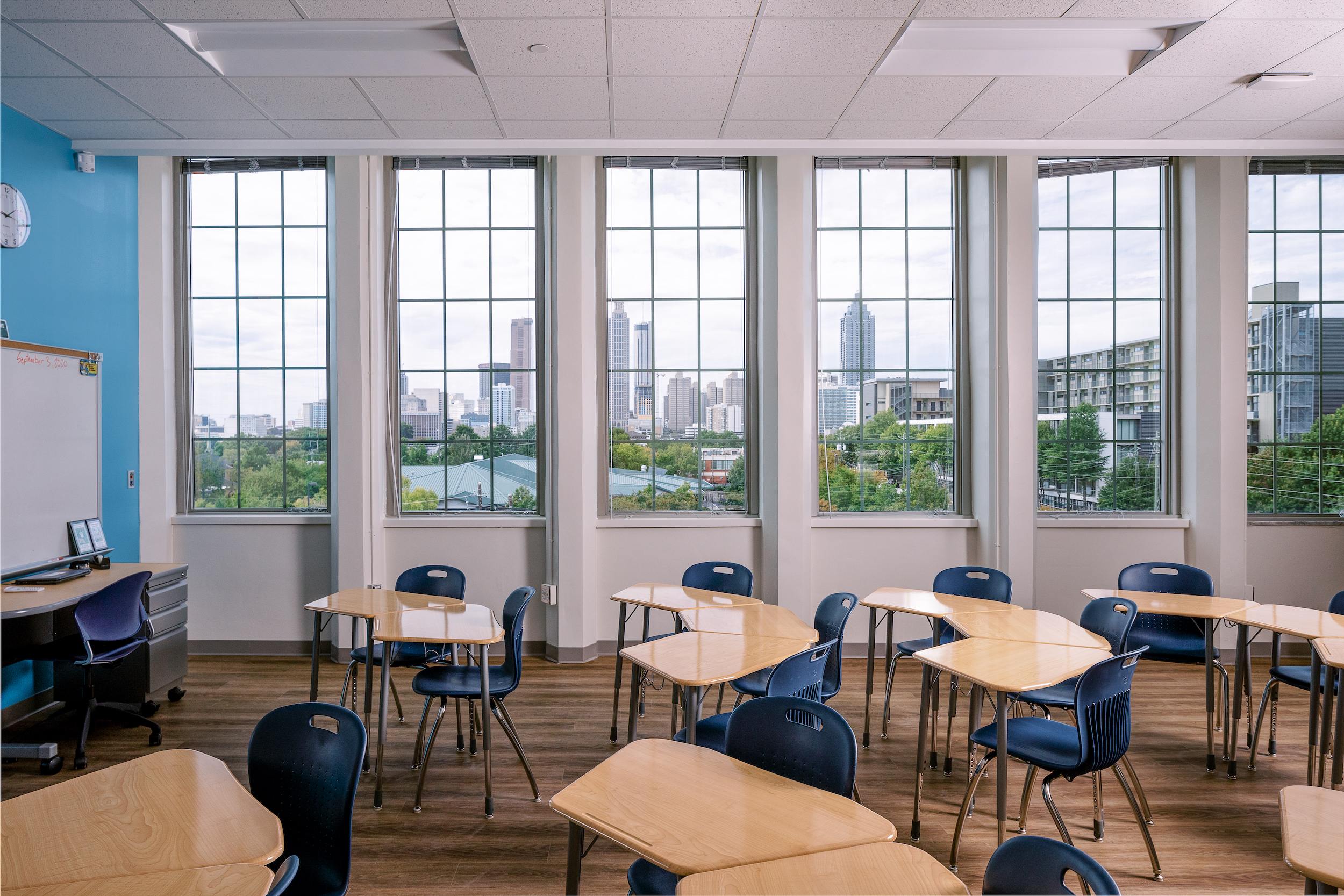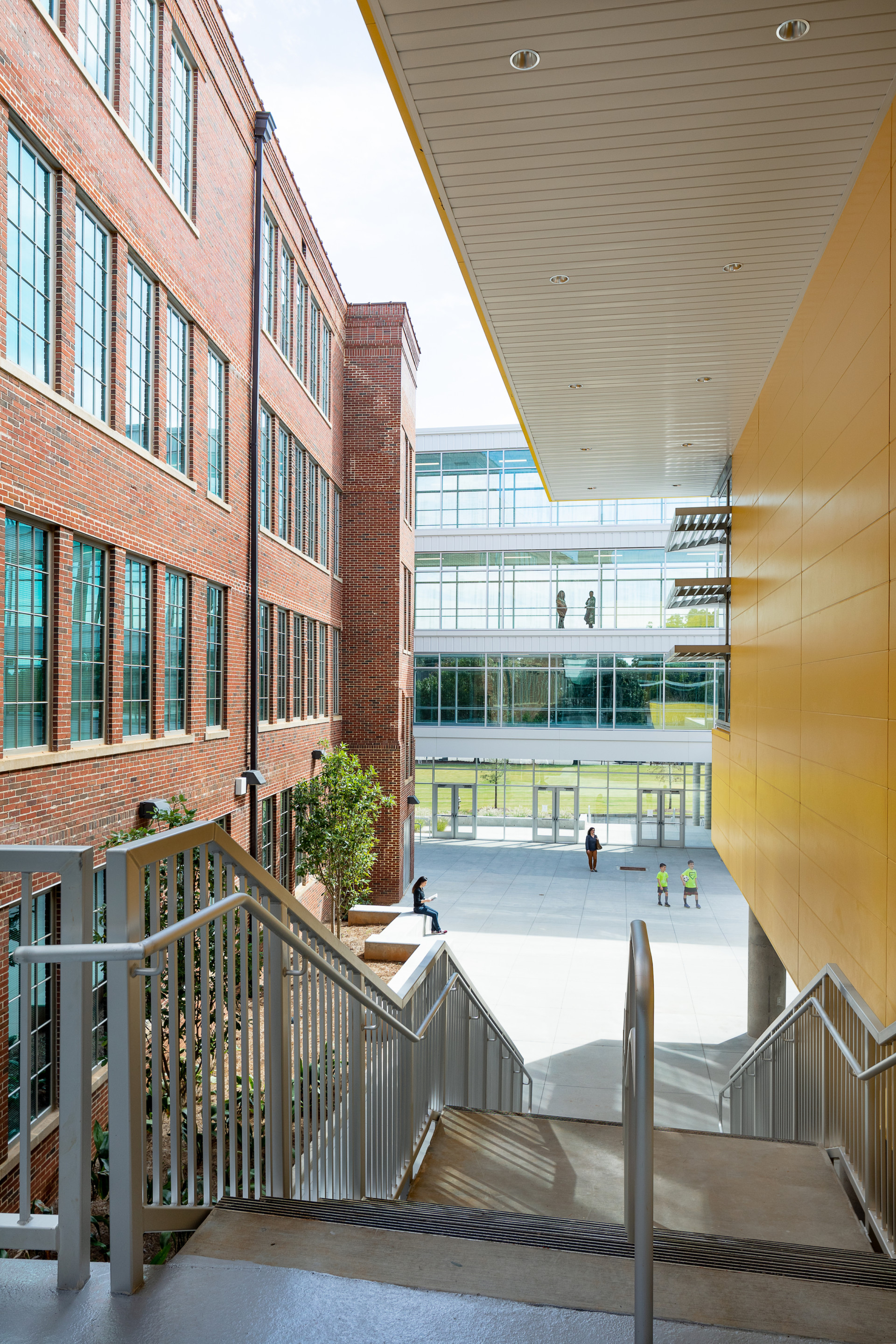Stevens & Wilkinson, an architecture, engineering, and interior design firm with offices in Atlanta and Columbia, South Carolina, has shared final photography of the $52 million top-to-bottom transformation of the landmark David T. Howard School in the Old Fourth Ward of Atlanta. Lord Aeck Sargent, a Katerra Company, collaborated with Stevens & Wilkinson on the dramatic renovation and expansion project and oversaw the landscape and building redesign as well as historic rehabilitation elements.
Now serving Atlantans as a public middle school, the David T. Howard School has a long and rich history. Erected in two phases between 1924 and 1928 on 7.5 acres of land donated by David T. Howard, a former slave who went on to become a prominent Atlanta mortician, bank-owner, philanthropist, the original brick structure originally functioned as a grammar school for Black students and was later converted into a high school in 1948. The school produced a number of notable alumni during both of these iterations including Martin Luther King Jr. (1936-1930), former NBA superstar Walt Frazier, business executive and civil rights activist Vernon Jordan, Olympic high jump gold medalist Mildred McDaniel Singleton, and Maynard Jackson, who was elected as Atlanta’s first African American mayor of Atlanta in 1973 and went on to serve three terms.

In 1976, the high school was closed due to low enrollment, and sections of the building were converted into ad hoc administrative space for Atlanta Public Schools (APS), offices for the school district’s facilities department, and archival storage space. As noted by Stevens & Wilkinson, in more recent decades the original building has also housed Head Start and ROTC programs.
The school’s rebirth as a public middle school comes after over two years of rehabilitation work that involved meticulously preserving the old 100,000-square-foot classroom building and its original features including the exterior brickwork and interior plaster and terrazzo details. The school’s footprint has also been expanded twofold with 108,000-square-feet of new construction, including an administrative wing (based on never-realized original design element), a music wing, kitchen and cafeteria, media center, auditorium, and four-level classroom addition. The existing gymnasium, which was completed 20 years after the original school opened according to a press release announcing the completion of the project, was also treated to a dramatic makeover including modernized lock room facilities, a new wooden stage and gym flooring, and refurbished bleachers.

“The most unique part of this project is the rejuvenation of a building that is nearly 100 years old,” said Bill Polk, principal and vice president of Stevens & Wilkinson, in a statement. “The challenge was to fit a modern school program into one of the city’s most historic neighborhoods, while designing an addition that respects the historic qualities and doubles the square footage.”
“Great care was taken to design sensitively around the existing structure to highlight the attributes, while at the same time creating a new identity for the contemporary facility,” added Polk. “The site design activates the urban setting and reconnects several pedestrian paths and bike trails that have come to define this area of the city.”

The paths and trails mentioned by Polk include both the Freedom Park Trail and the Atlanta BeltLine, the latter of which is located along a former railway corridor.
While the David T. Howard School has evaded the wrecking ball in the years since it ceased functioning as a school and was partially mothballed (an era marked by vandalism and disrepair per the Atlanta Journal-Constitution), Jere J. Smith III, director of capital improvements for APS, noted in a statement that this isn’t to say that razing the original structure wasn’t ever in the cards.
“Even after the building was shuttered as a school, Atlanta Public Schools understood the historical and cultural significance of the building to the city and neighborhood,” he said. “The school board reaffirmed over and over the value of this school and continually made the decision to keep the building, even as the option to tear down and build new was considered.”
With room for nearly 1,400 students, David T. Howard Middle School—replacing Inman Middle School as one of six Grady Cluster schools within the APS system—officially reopened this past August although said students were not present at the time to help break in the new spacious, state-of-the-art facility in-person due to the coronavirus pandemic.


















